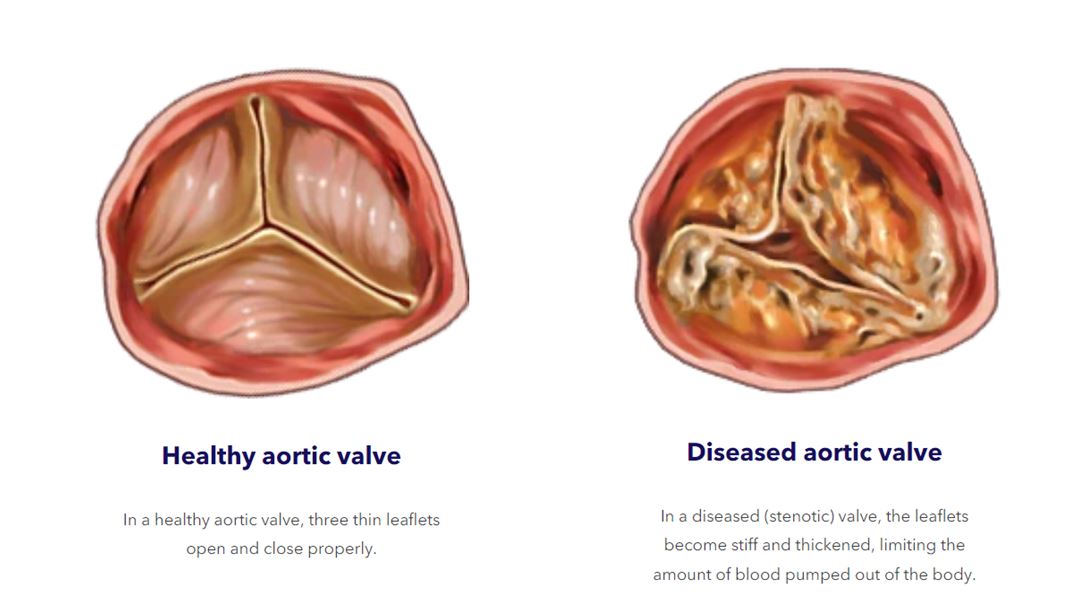
Are you fatigued and frequently out of breath during exercise? You may think this is a normal part of ageing, right? Perhaps it’s your body’s way of telling you to slow down? Maybe – but these symptoms could also indicate a serious underlying health problem.
You could be suffering from aortic stenosis, a potentially life-threatening heart condition that affects an estimated one in eight elderly Australians. If left untreated, aortic stenosis can result in heart failure and possibly death.
According to Dr David Roy, Senior Interventional and Adult Structural Cardiologist at St Vincent’s Private Hospital, “aortic stenosis is a condition where one of the main valves in the heart becomes narrow and restricts the outflow of blood from the heart to the rest of the body. It is usually progressive and the conditions occurs more frequently with age”.
He adds that aortic stenosis is also referred to as a ‘silent’ heart condition as people are often unaware of the valve narrowing of the valves until it becomes critical.
As we age, calcium can build up on the aortic valve causing it to narrow. This is the most common cause of aortic stenosis in people over 70 years of age. As a result, the heart has to work harder to push blood out into the aorta – the artery that carries blood to the rest of the body.
“When the aortic valve narrows it affects the flow of blood out of the main chamber in the heart (left ventricle) to the rest of the body. The narrowed valve causes excessive strain on the heart, thickening of the heart muscle and ultimately if untreated the narrowing leads to heart failure” explains Dr Roy.

While age is the most common factor, some people are born with a defect in their aortic valve which can lead to aortic stenosis in adult life. Another cause is rheumatic heart disease, a condition that can scar the aortic valve and narrow its opening.
Aortic stenosis is called a ‘silent’ killer because it often causes no symptoms, especially when the condition is mild. Symptoms usually only occur when aortic stenosis has already become severe and it can take years before a person notices that something might be wrong.
Some of the most common symptoms are:
Another tell-tale sign of aortic stenosis is a heart murmur, which is when your heart makes abnormal sounds like a ‘click’. Your doctor or cardiologist may discover this when they listen to your heart with a stethoscope during an examination. Your doctor may also send you for a non-invasive echocardiogram, a type of ultrasound that shows your doctor how blood is flowing through your heart and heart valves.
It’s important to talk to your doctor right away if you notice any of the above symptoms. Keeping track of signs and symptoms can also help you identify and monitor any underlying health conditions, including aortic stenosis.
The earlier aortic stenosis is diagnosed and treated, the better. The danger occurs when people put down the symptoms of aortic stenosis to ‘old age’ and miss out on life-saving treatment.
Dr Roy explains that early detection allows for correct diagnosis, and risk stratification to decide if treatment is necessary.
If tests show that you have only mild aortic stenosis, your doctor may recommend a ‘watch and wait’ approach involving regular monitoring and check-ups. You may also be prescribed some medications to reduce your risk of complications.
If your condition worsens or your symptoms become severe, you may need an aortic valve replacement or open-heart surgical valve replacement.
“There are currently no tablets or medications available to effectively treat aortic stenosis. The two treatment options include traditional open heart surgery and aortic valve replacement or a transcatheter aortic valve implantation (TAVI). This is a minimally invasive procedure and can be performed with the patient awake.
“The main advantages of a TAVI include procedural safety and a much shorter recovery time, with patients often able to be discharged following their procedure within 24 to 48 hours” says Dr Roy.
At the end of the day, it’s always important to listen to your body and discuss any changes or concerns with your doctor as soon as possible. Being diagnosed with aortic stenosis can be worrying but talking to your doctor, seeking early treatment, and proactively managing your condition can help you live a longer and healthier life.
IMPORTANT LEGAL INFO This article is of a general nature and FYI only, because it doesn’t take into account your personal health requirements or existing medical conditions. That means it’s not personalised health advice and shouldn’t be relied upon as if it is. Before making a health-related decision, you should work out if the info is appropriate for your situation and get professional medical advice.

It’s always important to listen to the messages your body is sending you. Use this symptom tracker to record any symptoms you have noticed and bring it to your next appointment to review with your doctor.